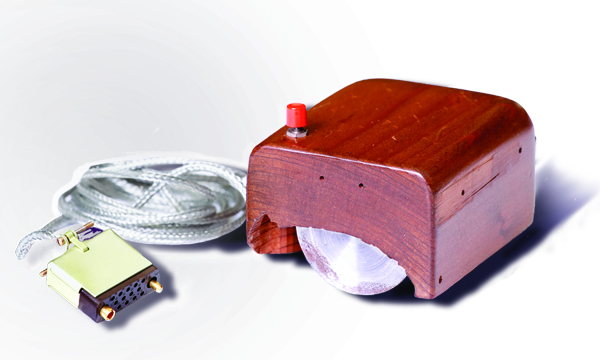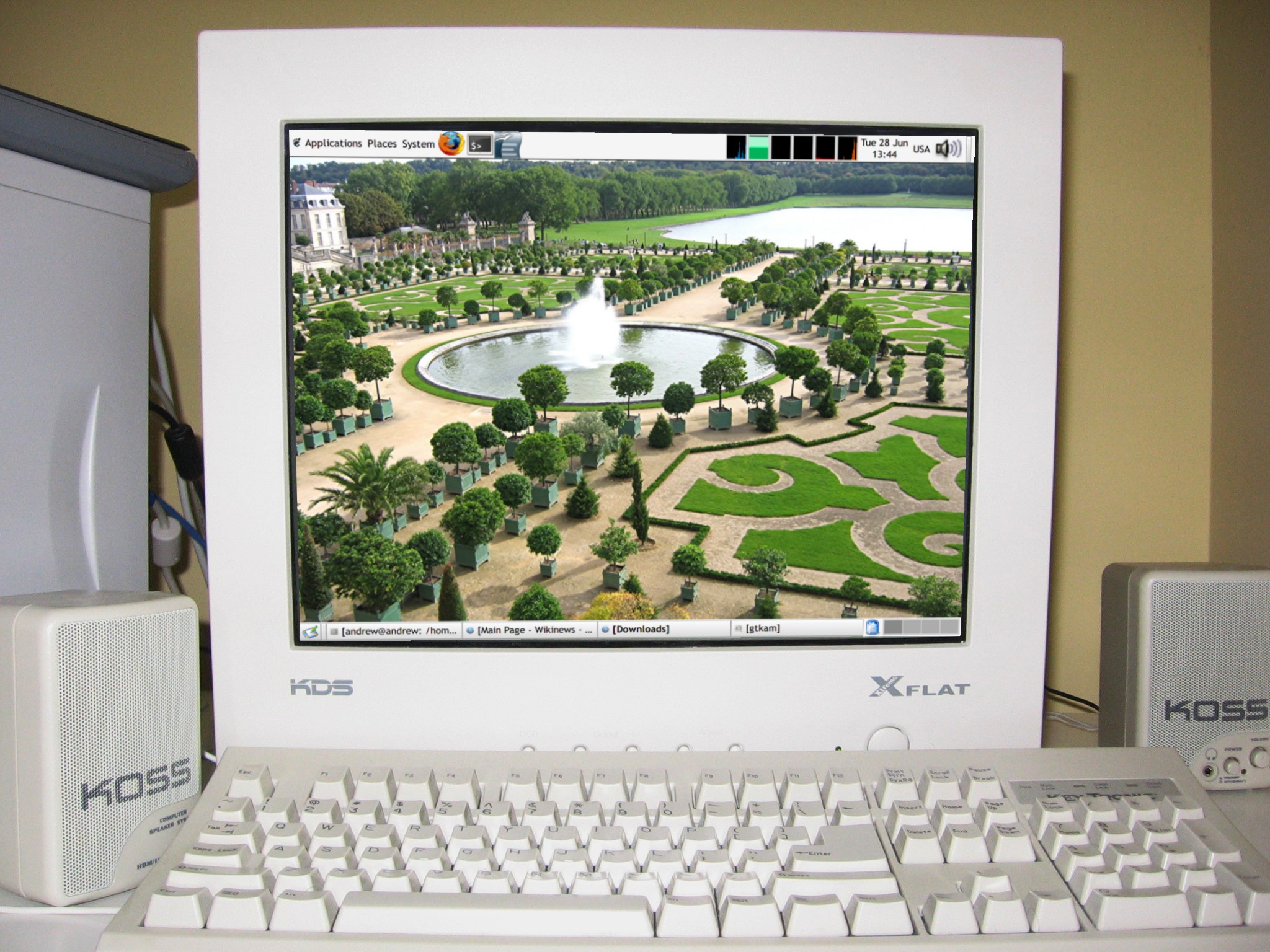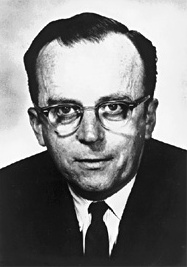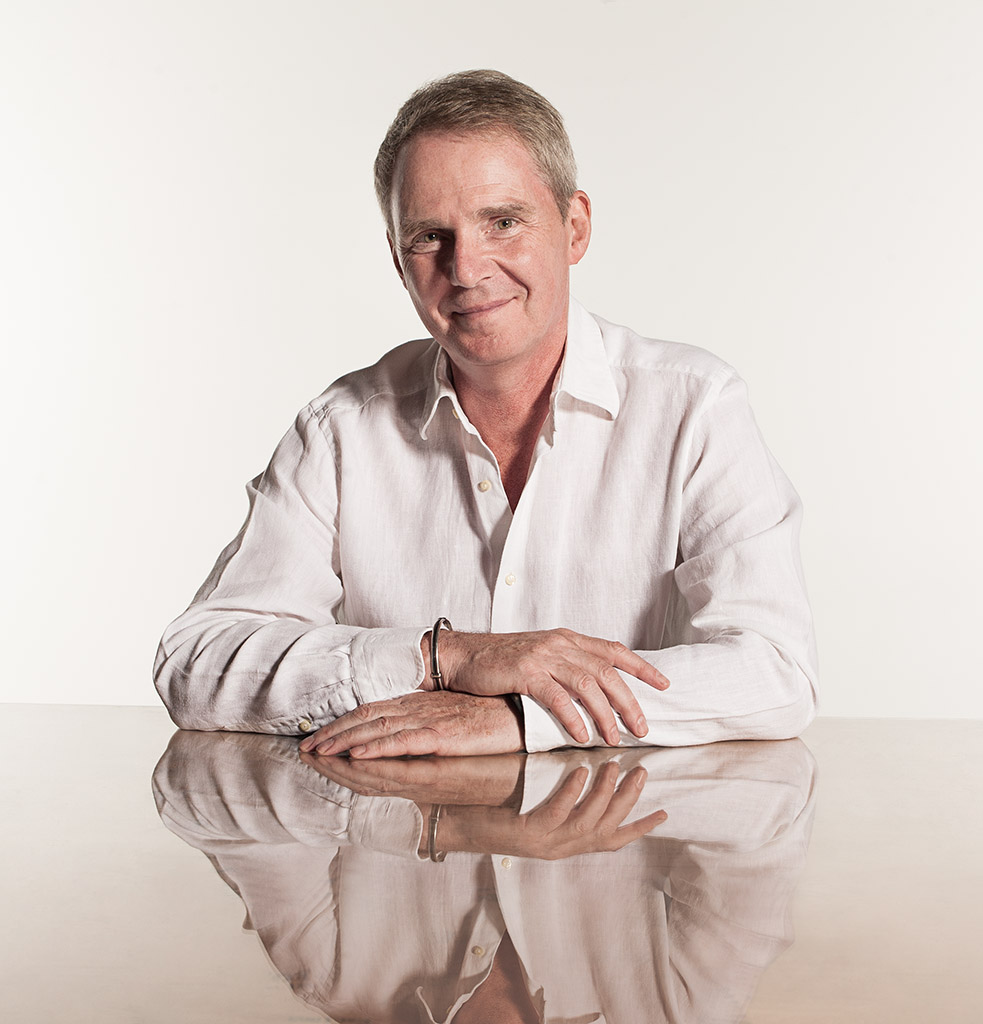|
Douglas Engelbart
Douglas Carl Engelbart (January 30, 1925 – July 2, 2013) was an American engineer and inventor, and an early computer and Internet pioneer. He is best known for his work on founding the field of human–computer interaction, particularly while at his Augmentation Research Center Lab in SRI International, which resulted in creation of the computer mouse, and the development of hypertext, networked computers, and precursors to graphical user interfaces. These were demonstrated at The Mother of All Demos in 1968. Engelbart's law, the observation that the intrinsic rate of human performance is exponential, is named after him. NLS, the "oN-Line System," developed by the Augmentation Research Center under Engelbart's guidance with funding primarily from ARPA (as DARPA was then known), demonstrated numerous technologies, most of which are now in widespread use; it included the computer mouse, bitmapped screens, hypertext; all of which were displayed at "The Mother of All De ... [...More Info...] [...Related Items...] OR: [Wikipedia] [Google] [Baidu] |
Portland, Oregon
Portland (, ) is a port city in the Pacific Northwest and the largest city in the U.S. state of Oregon. Situated at the confluence of the Willamette and Columbia rivers, Portland is the county seat of Multnomah County, the most populous county in Oregon. Portland had a population of 652,503, making it the 26th-most populated city in the United States, the sixth-most populous on the West Coast, and the second-most populous in the Pacific Northwest, after Seattle. Approximately 2.5 million people live in the Portland metropolitan statistical area (MSA), making it the 25th most populous in the United States. About half of Oregon's population resides within the Portland metropolitan area. Named after Portland, Maine, the Oregon settlement began to be populated in the 1840s, near the end of the Oregon Trail. Its water access provided convenient transportation of goods, and the timber industry was a major force in the city's early economy. At the turn of the 20th centu ... [...More Info...] [...Related Items...] OR: [Wikipedia] [Google] [Baidu] |
Augmentation Research Center
SRI International's Augmentation Research Center (ARC) was founded in the 1960s by electrical engineer Douglas Engelbart to develop and experiment with new tools and techniques for collaboration and information processing. The main product to come out of ARC was the revolutionary oN-Line System, better known by its abbreviation, NLS. ARC is also known for the invention of the "computer mouse" pointing device, and its role in the early formation of the Internet. Engelbart recruited workers and ran the organization until the late 1970s when the project was commercialized and sold to Tymshare, which was eventually purchased by McDonnell Douglas. Beginnings Some early ideas by Douglas Engelbart were developed in 1959 funded by the Air Force Office of Scientific Research (now Rome Laboratory). By 1962, a framework document was published. J. C. R. Licklider, the first director of the United States Department of Defense's Advanced Research Project Agency (DARPA) Information Process ... [...More Info...] [...Related Items...] OR: [Wikipedia] [Google] [Baidu] |
Human–computer Interaction
Human–computer interaction (HCI) is research in the design and the use of computer technology, which focuses on the interfaces between people ( users) and computers. HCI researchers observe the ways humans interact with computers and design technologies that allow humans to interact with computers in novel ways. A device that allows interaction between human being and a computer is known as a "Human-computer Interface (HCI)". As a field of research, human–computer interaction is situated at the intersection of computer science, behavioral sciences, design, media studies, and several other fields of study. The term was popularized by Stuart K. Card, Allen Newell, and Thomas P. Moran in their 1983 book, ''The Psychology of Human–Computer Interaction.'' The first known use was in 1975 by Carlisle. The term is intended to convey that, unlike other tools with specific and limited uses, computers have many uses which often involve an open-ended dialogue between the user a ... [...More Info...] [...Related Items...] OR: [Wikipedia] [Google] [Baidu] |
List Of Internet Pioneers
Instead of having a single "inventor", the Internet was developed by many people over many years. The following are some Internet pioneers who contributed to its early and ongoing development. These include early theoretical foundations, specifying original protocols, and expansion beyond a research tool to wide deployment. The pioneers Claude Shannon Claude Shannon (1916–2001) called the "father of modern information theory", published "A Mathematical Theory of Communication" in 1948. His paper gave a formal way of studying communication channels. It established fundamental limits on the efficiency of communication over noisy channels, and presented the challenge of finding families of codes to achieve capacity. Vannevar Bush Vannevar Bush (1890–1974) helped to establish a partnership between U.S. military, university research, and independent think tanks. He was appointed Chairman of the National Defense Research Committee in 1940 by President Franklin D. Roosevelt, ap ... [...More Info...] [...Related Items...] OR: [Wikipedia] [Google] [Baidu] |
Inventor
An invention is a unique or novel device, method, composition, idea or process. An invention may be an improvement upon a machine, product, or process for increasing efficiency or lowering cost. It may also be an entirely new concept. If an idea is unique enough either as a stand alone invention or as a significant improvement over the work of others, it can be patented. A patent, if granted, gives the inventor a proprietary interest in the patent over a specific period of time, which can be licensed for financial gain. An inventor creates or discovers an invention. The word ''inventor'' comes from the Latin verb ''invenire'', ''invent-'', to find. Although inventing is closely associated with science and engineering, inventors are not necessarily engineers or scientists. Due to advances in artificial intelligence, the term "inventor" no longer exclusively applies to an occupation (see human computers). Some inventions can be patented. The system of patents was established ... [...More Info...] [...Related Items...] OR: [Wikipedia] [Google] [Baidu] |
Engineer
Engineers, as practitioners of engineering, are professionals who invent, design, analyze, build and test machines, complex systems, structures, gadgets and materials to fulfill functional objectives and requirements while considering the limitations imposed by practicality, regulation, safety and cost. "Science is knowledge based on our observed facts and tested truths arranged in an orderly system that can be validated and communicated to other people. Engineering is the creative application of scientific principles used to plan, build, direct, guide, manage, or work on systems to maintain and improve our daily lives." The word ''engineer'' (Latin ) is derived from the Latin words ("to contrive, devise") and ("cleverness"). The foundational qualifications of an engineer typically include a four-year Bachelor of Engineering, bachelor's degree in an engineering discipline, or in some jurisdictions, a Master of Engineering, master's degree in an engineering discipline plus ... [...More Info...] [...Related Items...] OR: [Wikipedia] [Google] [Baidu] |
Computer History Museum
The Computer History Museum (CHM) is a museum of computer history, located in Mountain View, California. The museum presents stories and artifacts of Silicon Valley and the information age, and explores the computing revolution and its impact on society. History The museum's origins date to 1968 when Gordon Bell began a quest for a historical collection and, at that same time, others were looking to preserve the Whirlwind computer. The resulting ''Museum Project'' had its first exhibit in 1975, located in a converted coat closet in a DEC lobby. In 1978, the museum, now ''The Digital Computer Museum'' (TDCM), moved to a larger DEC lobby in Marlborough, Massachusetts. Maurice Wilkes presented the first lecture at TDCM in 1979 – the presentation of such lectures has continued to the present time. TDCM incorporated as '' The Computer Museum'' (TCM) in 1982. In 1984, TCM moved to Boston, locating on Museum Wharf. In 1996/1997, the TCM History Center (TCMHC) was established; ... [...More Info...] [...Related Items...] OR: [Wikipedia] [Google] [Baidu] |
Norbert Wiener Award For Social And Professional Responsibility
The Norbert Wiener Award for Social and Professional Responsibility was established in 1987 in honor of Norbert Wiener to recognize contributions by computer professionals to socially responsible use of computers. It was awarded annually by CPSR, Computer Professionals for Social Responsibility, until that organization disbanded in 2013. The award is now managed by the IEEE Society for the Social Implications of Technology. Winners * 1987: David Parnas * 1988: Joseph Weizenbaum * 1989: Daniel McCracken * 1990: Kristen Nygaard * 1991: Severo Ornstein and Laura Gould * 1992: Barbara Simons * 1993: Institute for Global Communications * 1994: Antonia Stone * 1995: Tom Grundner * 1996: Phil Zimmermann * 1997: Peter Neumann * 1998: Internet Engineering Task Force * 1999: The Free Software & Open Source Movements * 2000: Marc Rotenberg * 2001: Nira Schwartz and Theodore Postol * 2002: Karl Auerbach * 2003: Mitch Kapor * 2004: Barry Steinhardt * 2005: Douglas Engelbart * 200 ... [...More Info...] [...Related Items...] OR: [Wikipedia] [Google] [Baidu] |
Lovelace Medal
The Lovelace Medal was established by the British Computer Society in 1998, and is presented to individuals who have made outstanding contributions to the understanding or advancement of computing. It is the top award in computing in the UK. Awardees deliver the Lovelace Lecture. The award is named after Countess Ada Lovelace, an English mathematician, scientist, and writer. Lovelace was the daughter of Lord Byron. She worked with computer pioneer Charles Babbage on the proposed mechanical general-purpose computer – the Analytical Engine, in 1842 and is often described as the world's first female computer programmer. The medal is intended to be presented to individuals, without regard to their countries of domicile, provided a direct connection to the UK. It is generally anticipated that there will be one medalist each year, but the regulation does not preclude either several medalists or no medalist. Medal recipients Awardees include: *2020 Ian Horrocks – for significant con ... [...More Info...] [...Related Items...] OR: [Wikipedia] [Google] [Baidu] |
British Computer Society
Sir Maurice Wilkes served as the first President of BCS in 1957 BCS, The Chartered Institute for IT, known as the British Computer Society until 2009, is a professional body and a learned society that represents those working in information technology (IT) and computer science, both in the United Kingdom and internationally. Founded in 1957, BCS has played an important role in educating and nurturing IT professionals, computer scientists, computer engineers, upholding the profession, accrediting chartered IT professional status, and creating a global community active in promoting and furthering the field and practice of computing. Overview With a worldwide membership of 57,625 members as of 2021, BCS is a registered charity and was incorporated by Royal Charter in 1984. Its objectives are to promote the study and application of communications technology and computing technology and to advance knowledge of education in ICT for the benefit of professional practitioners ... [...More Info...] [...Related Items...] OR: [Wikipedia] [Google] [Baidu] |
Turing Award
The ACM A. M. Turing Award is an annual prize given by the Association for Computing Machinery (ACM) for contributions of lasting and major technical importance to computer science. It is generally recognized as the highest distinction in computer science and is colloquially known as or often referred to as the " Nobel Prize of Computing". The award is named after Alan Turing, who was a British mathematician and reader in mathematics at the University of Manchester. Turing is often credited as being the key founder of theoretical computer science and artificial intelligence. From 2007 to 2013, the award was accompanied by an additional prize of US$250,000, with financial support provided by Intel Intel Corporation is an American multinational corporation and technology company headquartered in Santa Clara, California, Santa Clara, California. It is the world's largest semiconductor chip manufacturer by revenue, and is one of the devel ... and Google. Since 2014, the awar ... [...More Info...] [...Related Items...] OR: [Wikipedia] [Google] [Baidu] |








.jpg)